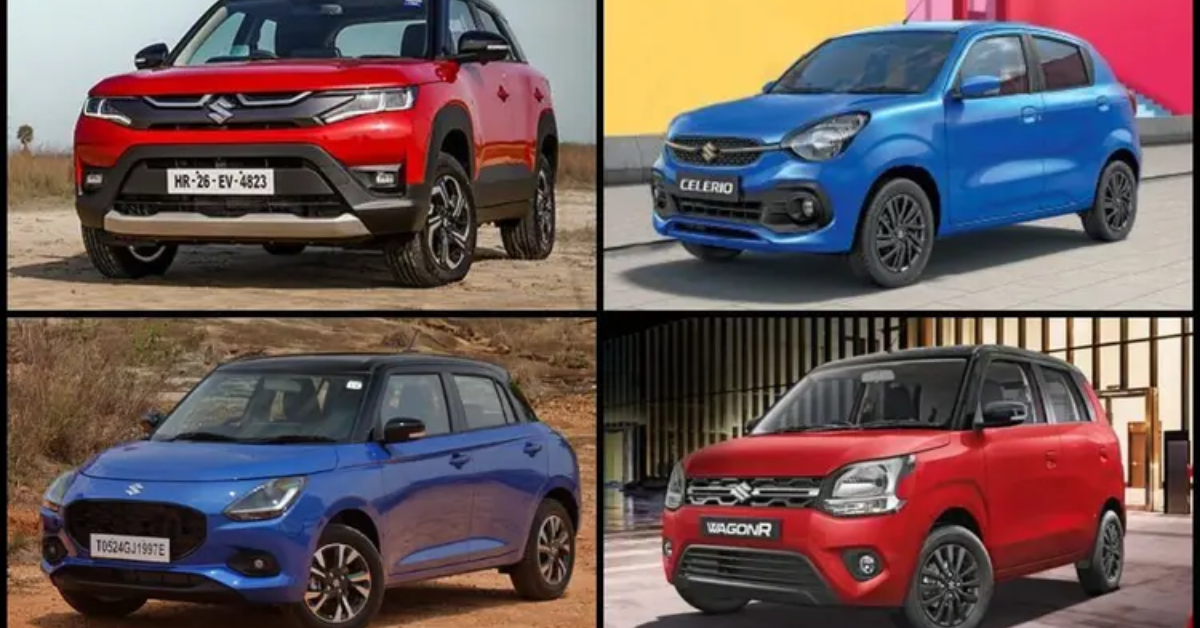The Indian automobile market is set for a price shake-up as Maruti Suzuki, the country’s largest carmaker, announces price reductions of up to ₹1.30 lakh across some of its most popular models, including the Alto, Swift, Dzire, and Brezza. This comes in the wake of the newly implemented GST 2.0, which has rationalized tax rates for vehicles based on engine capacity, fuel type, and vehicle category.
With these revisions, Maruti Suzuki cars become more affordable for buyers, strengthening their appeal in both urban and semi-urban markets. Let’s dive into the details of the GST 2.0 effect, new prices, and what it means for Indian car buyers.
Why the Price Reduction Happened
GST 2.0 has brought changes to the effective tax rates on cars, especially affecting small cars, hatchbacks, compact sedans, and subcompact SUVs. Key points include:
- Small cars (petrol engines under 1.2L) now attract slightly lower GST.
- Diesel variants and subcompact SUVs see marginal tax reductions.
- Luxury vehicles face minor adjustments, but the impact is less pronounced.
Maruti Suzuki has passed these tax savings to customers, making their cars more affordable across multiple segments.
Price Cuts Across Popular Maruti Models
While prices may vary slightly across cities, here’s an approximate overview of new ex-showroom prices following GST 2.0:
- Maruti Alto
- Price Cut: Up to ₹25,000
- New Price Range: ₹3.50–₹5.00 lakh approx.
- Highlights: Perfect for first-time buyers, fuel-efficient, and easy to maneuver in city traffic.
- Maruti Swift
- Price Cut: Up to ₹60,000
- New Price Range: ₹6.00–₹8.50 lakh approx.
- Highlights: Sporty hatchback, popular among urban professionals, advanced safety features.
- Maruti Dzire
- Price Cut: Up to ₹80,000
- New Price Range: ₹6.50–₹9.00 lakh approx.
- Highlights: Compact sedan with comfortable interiors, spacious cabin, and excellent fuel economy.
- Maruti Brezza
- Price Cut: Up to ₹1.30 lakh
- New Price Range: ₹8.50–₹12.50 lakh approx.
- Highlights: Subcompact SUV with bold design, modern features, and reliable performance.
These reductions make Maruti Suzuki vehicles even more attractive, particularly for budget-conscious buyers who seek value for money without compromising on features or reliability.
Segment-Wise Analysis
1. Hatchbacks: Alto and Swift
Hatchbacks are the backbone of Maruti Suzuki’s sales in India. The Alto, being the entry-level car, benefits first-time buyers and urban commuters with its affordable pricing and low maintenance cost.
The Swift, a premium hatchback, becomes even more competitive against rivals like Hyundai i20, Tata Altroz, and Honda Jazz. With improved pricing, the Swift may attract buyers looking for a sporty yet practical city car.
2. Compact Sedans: Dzire
The Dzire remains India’s favorite compact sedan. Post GST 2.0, it gets better pricing, which strengthens its position against competitors like the Honda Amaze, Hyundai Aura, and Tata Tigor.
Benefits of lower Dzire prices:
- Enhanced affordability for families
- Competitive edge in sales
- Value proposition for small business owners or fleet operators
3. Subcompact SUVs: Brezza
The Brezza continues to be a strong performer in the subcompact SUV segment. With a price reduction of up to ₹1.30 lakh, the Brezza now competes more aggressively with:
- Kia Sonet
- Hyundai Venue
- Tata Nexon
The Brezza’s appeal lies in bold styling, high seating position, fuel-efficient engines, and feature-rich interiors, making it a top choice for urban and semi-urban buyers alike.
Benefits for Buyers
The GST 2.0 price cuts provide clear advantages to buyers:
- Lower Upfront Cost – Buyers pay less without sacrificing features.
- Better Financing Options – Reduced cost may lower EMI for those opting for loans.
- Enhanced Value for Money – Popular models like Brezza and Dzire become more accessible.
- Encourages Upgrades – Buyers may opt for higher trims or additional features now that pricing is more favorable.
Overall, these price reductions make Maruti Suzuki vehicles even more appealing for middle-class and urban families.
Strategic Implications for Maruti Suzuki
By adjusting prices in line with GST 2.0, Maruti Suzuki:
- Maintains market leadership in multiple segments (hatchbacks, sedans, subcompact SUVs)
- Strengthens brand perception as customer-friendly and value-driven
- Encourages sales growth amid rising competition from Hyundai, Tata, Kia, and Honda
The proactive move ensures Maruti Suzuki stays ahead in a price-sensitive market, especially as GST 2.0 could influence pricing strategies across other brands.
Competitor Analysis
Post GST 2.0, Maruti Suzuki vehicles face renewed competition, but the price advantage gives them a clear edge. Competitors may respond with their own price cuts, but Maruti’s strong after-sales network, brand reliability, and wide service availability remain key differentiators.
The Bigger Picture: GST 2.0 and Indian Car Market
GST 2.0 is expected to influence the Indian automobile market in multiple ways:
- Price rationalization makes cars more affordable across segments
- Boosts demand for compact, fuel-efficient cars in urban centers
- Encourages manufacturers to introduce updated models and trims
- Benefits first-time buyers and small families seeking value
Maruti Suzuki’s quick response to GST 2.0 demonstrates the brand’s customer-centric approach and understanding of market dynamics.
Final Thoughts
The GST 2.0 effect on Maruti Suzuki makes some of India’s most popular cars—Alto, Swift, Dzire, and Brezza—more affordable than ever. With price reductions ranging from ₹25,000 to ₹1.30 lakh, buyers can enjoy premium features, reliability, and comfort at lower costs.
Whether you’re a first-time buyer, a small family, or an urban professional, these revised prices provide better value for money and make Maruti Suzuki a compelling choice in India’s competitive car market.
